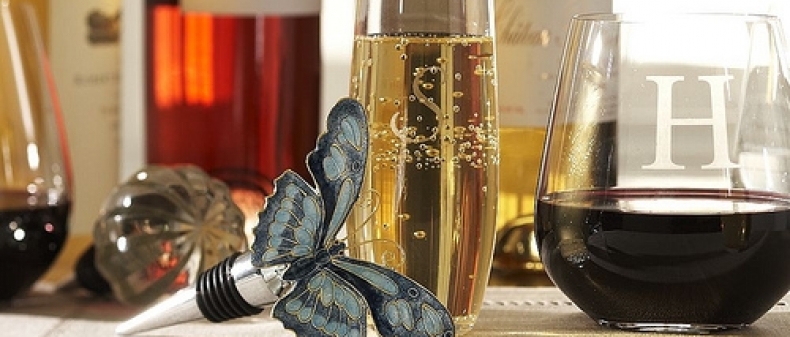
Image: Muvement.blogspot.com
Chaos theory is a fascinating field of mathematics with far-reaching implications for just about everything, including physics, economics, the weather, and whether or not you’ll enjoy your glass of wine tonight, and the meal, and the company. It has to do with the interconnectedness of all things: nothing exists in isolation; the laws of cause and effect govern all. Even chaos is predictable.
Chaos theorists study systems that are constantly changing, dynamical systems as they’re called, which are particularly sensitive to initial conditions. That’s to say that a minor change in the system at one point will lead to a massive change in the future. This was famously termed the “butterfly effect” by Edward Lorenz in a paper delivered 40 years ago entitled Predictability: Does the Flap of a Butterfly’s Wings in Brazil set off a Tornado in Texas? A seemingly insignificant change in one part of the system, like the gentle flap of a tiny butterfly wing on a distant continent, or the first family to default on a sub-prime mortgage, potentially leads to a dramatic outcome at some point down the road.
But chaos, as I see it, is not limited to physical systems. Psychological chaos also exists. It’s the idea that some minor thought that flashes across the mind almost imperceptibly, insignificant at first, can change your entire perception of something over time. That little thought drops in your mind, and then ripples outward, lapping against other parts of the brain and triggering other, more powerful impressions until suddenly your life view is different.
The fact that outside influences affect sensory perception has been well documented. Marketers know that branding is powerful; even pre-school children are subject to the powerful influence of brand perception. In a study some years ago, 77 per cent of children offered three bags of identical French fries preferred the taste of the fries in the bag with the MacDonald’s logo over the fries in the two generic, unmarked bags. Adults are no less immune. Time and again, studies have shown how a higher price associated with a bottle of wine correlates positively with greater enjoyment, compared to the identical bottle believed to be less expensive. And price is just one factor. Region, grape, producer, label, closure, critic’s review and countless other factors also affect perception of quality. (I’ll note that in these studies the wine experts are less easily swayed.) It’s not that consumers are simply being fooled, either, as they really are enjoying the product as much or more; fMRI scans show the identical images associated with more pleasure. Sometimes it’s enough to think the wine is good, leading to the conclusion that for most people, the perception of quality is as powerful, if not more powerful, than the quality of the actual molecules swimming around inside the bottle.
But let’s get back to chaos: does it work both ways? Does your perception of the wine spill back over to other perceptions? If all is truly interconnected, then the outside cues that change how you perceive the wine must also in turn be affected by the wine itself. I’d say that wine, like everything else, has the ability to change how you perceive your surroundings (at least at that moment, until more chaos interferes). We’ve all experienced how human relations can turn on seemingly insignificant details — it’s a complex system that’s sensitive to conditions. Just think of that first date or job interview when you had an intuitive sense that things were going well, or badly, without really being able to put your finger on it. Maybe it’s a minor, mildly annoying habit like fidgeting that sets you off, a barely perceptible nasal whine or a disagreeable eau-de-toilet. Suddenly, and involuntarily, once the butterfly has flapped its wings in your mind, the weather changes. The person may start to seem a little less smart, not quite as beautiful, and finally downright unsuitable. A minor detail has coloured the perception of apparently unrelated things — is fidgeting or perfume related to intelligence or beauty? No one would claim so, but perception is powerful.
Now imagine a restaurant scenario, a very complex system indeed. The success or failure of a restaurant is based on so many factors that no one has been able to nail down exactly the secrets of consistent success. There are the tangible things that don’t change like the location, the décor and the menu, and then the things that are constantly changing, such as the actual food delivered, the service, the mood of the maître d’ and the waiter, the company you’re with, the general vibe and even the weather. All of these elements are interconnected and each affects the perception of the others, fixed or not. A sunny day on the patio with close friends makes everything taste a little better, just as a surly waiter or a tense meeting with an acquaintance produce the opposite effect. Minor things are constantly happening that have a profound effect on your overall enjoyment — it’s chaos theory at its best.
And wine, too, is part of the puzzle. Imagine the cheerful server arrives and suggests a wine from your favorite region, one famous for its fine wine. He reassures you that it’s excellent and will be a fine match for your main course. The bottle arrives, the label is attractive, it’s closed with a high-end natural cork (or screw cap, whichever you prefer), and served at the perfect temperature. You will like the wine. And not only will you like it, but your enthusiastic energy will likely spillover to your tablemates, too, who will also perceive the wine as excellent. And not only will the wine be excellent, but the food will also taste better, the ambiance will be a little more pleasant, the location not so far out of the way and the service will even appear more seamless. In the end, you are more likely to return to the restaurant.
In a study conducted by Cornell University entitled Fine as North Dakota Wine, diners in Illinois were offered a free glass of cabernet sauvignon along with a prix fixe menu. Half of the diners were told that the wine was from Noah’s Winery in California, the other half that it was from Noah’s Winery in North Dakota; both were identical (Two Buck Chuck, as it turns out). And the results? “Those drinking what they thought was California wine, rated the wine and food as tasting better, and ate 11 per cent more of their food. They were also more likely to make return reservations.”
Not only does this support the theory that everything is interconnected and that chaos theory rules, but also shows that restaurants with crappy wine lists are bound to go out of business, sooner or later.
—–
John Szabo is a master sommelier and wine writer for Toronto Standard. Follow his tweets here: @johnszabo.
More recommendations by John Szabo at www.johnswines.com
For more, follow us on Twitter @TorontoStandard and subscribe to our newsletter.














